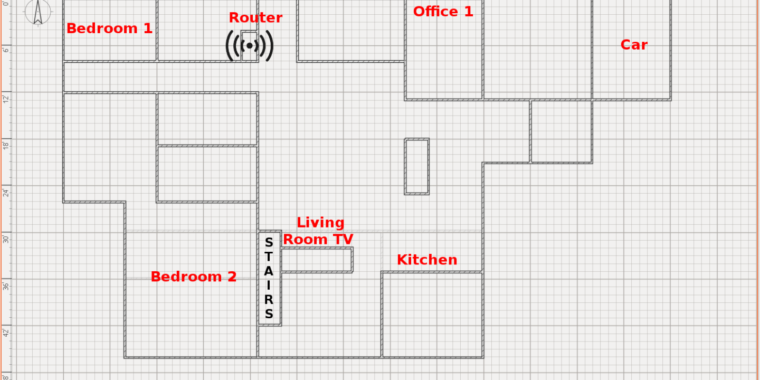› Forums › General › News (General) › The Ars Technica semi-scientific guide to Wi-Fi Access Point placement
Tagged: ConnectivityTech_S8, IoTNetwork_H5, Tips_G9
- This topic is empty.
-
AuthorPosts
-
-
April 25, 2020 at 5:53 pm #41196
#News(General) [ via IoTGroup ]
Headings…
The Ars Technica semi-scientific guide to Wi-Fi Access Point placement
Wi-Fi is like real estate—the secret is location, location, location.
 Before we get started
Before we get startedAuto extracted Text……
These rules apply whether we’re talking about a single Wi-Fi router, a mesh kit like Eero, Plume, or Orbi, or a set of wire-backhauled access points like Ubiquiti’s UAP-AC line or TP-Link’s EAPs. Unfortunately, these “rules” are necessarily closer to “guidelines” as there are a lot of variables it’s impossible to fully account for from an armchair a few thousand miles away.
Let’s go over one bit of RF theory (radio-frequency) before we get started on our ten rules—some of them will make much better sense if you understand how RF signal strength is measured and how it attenuates over distance and through obstacles.
Each doubling of distance drops the signal by 6dBM, as we can clearly see when we look at the bold red 2.4GHz curve: at 1m distance, the signal is -40dBM; at 2m, it’s -46dBM, and at 4m it’s down to -52dBM.
A good rule of thumb is -3dBM for each additional wall or other significant obstruction, which we’ll talk more about later.
While you should ideally have signal levels no lower than -67dBM, you shouldn’t fret about trying to get them much higher than that—typically, there’s no real performance difference between a blazing-hot -40dBM and a considerably-cooler -65dBM, as far away from one another on a chart as they may seem.
There’s a lot more going on with Wi-Fi than just raw signal strength; as long as you exceed that minimum, it doesn’t really matter how much you exceed it by.
Our first rule for access point placement is no more than two rooms and two interior walls between access points and devices, if possible.
This is a pretty fudge-y rule, because different rooms are shaped and sized differently, and different houses have different wall structures—but it’s a good starting point, and it will serve you well in typically-sized houses and apartments with standard, reasonably modern sheet rock interior wall construction
Read More..
AutoTextExtraction by Working BoT using SmartNews 1.02976805238 Build 26 Aug 2019
-
-
AuthorPosts
- You must be logged in to reply to this topic.
